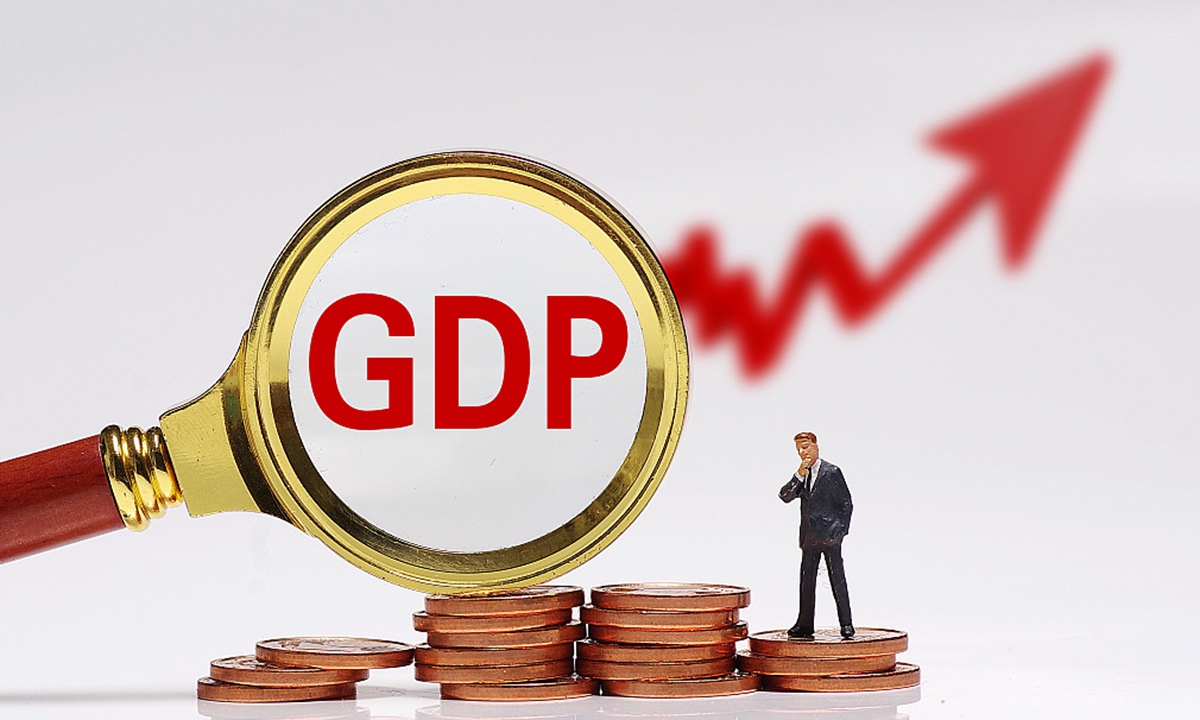
Photo:VCG
China's economy might grow at a rate between 4 and 5 percent, multiple Chinese economists forecast ahead of the country's release of its first-quarter GDP on Monday. Most cited trade as an important boost for GDP growth in Q1, while considering the recent outbreaks of COVID-19 cases, particularly in Shanghai, a major downward pressure on the economic performance in the first three months of the year.
Going further, they also expressed some caution as to the country's GDP target for the entire year of 2022. Some insiders said that China should have no problems achieving it by rolling out stimulus policies, while most mentioned uncertainties exist as the success of achieving the target depends on future development of the epidemic.
Cong Yi, professor of the Tianjin University of Finance and Economics, told the Global Times on Sunday that he forecasted China's GDP growth to hit 5 percent in the first quarter.
According to Cong, China's infrastructure construction and foreign trade have maintained good momentum in Q1 which is expected to offset the impact of the epidemic on consumption.
In the first three months, China's trade totaled 9.42 trillion yuan ($1.48 trillion), up 10.7 percent on a yearly basis, according to data from customs.
Tian Yun, a veteran macroeconomic analyst, echoed the opinion that China's trade sector would be a major stimulus behind China's growth in the first quarter. In total, Tian expects China's GDP to grow about 4.5 percent in Q1.
"China's trade surplus has reached a new historical high, which means that the driving force lent by trade to the domestic GDP is increasing," Tian told the Global Times, adding that infrastructure and manufacturing investment have also increased from the previous quarter making positive contributions to the country's Q1 GDP.
However, most economists agreed that the recent outbreak of COVID-19 is the biggest negative force on the domestic economy and many have downgraded their GDP forecast for Q1 because of that.
For example, analysts from the Bank of Communications forecasted China's GDP growth at about 4 percent in Q1, according to a report published by media. In the report, they noted that the COVID-19 outbreak should drive the contraction of the consumption sector by 7 percent, while industrial added value growth should slow down to about 5 percent as a result of slowing production activities.
In comparison, overseas economists are holding an even gloomier outlook on China's economic prospects. For example, Macquarie Capital expects China's Q1 GDP growth to be flat from the previous quarter at 4 percent, while ING Bank lowered its growth forecast for the January-March period to 2.28 percent.
Chang Jian, chief China economist from Barclays Bank, also forecasted that Shanghai's lockdown will last about a month, with manufacturing and services output dropping by 50 percent in affected regions. This, plus epidemic management measures in some other areas, will drag down the company's quarterly GDP forecast by 150-200 basis points.
Looking further, analysts showed somewhat of a cautious attitude as they pointed out the uncertain impact brought about by the coronavirus outbreaks on whole-year GDP in China.
Tian said that future challenges for China's economic growth are whether Shanghai can put the pandemic under control in May, whether China can find growth clusters amid pandemic prevention efforts, and the impact of interest rate hikes of the US Federal Reserve on China's trade and capital flow.
Zhou Jingtong, a senior economist from the Academy of the Bank of China, also told the Global Times that China would have relatively big pressure maintaining a 5 percent GDP growth in Q2 and a 5.5 percent growth in the whole year if the country does not increase the strength of macroeconomic policies support.
In comparison, Cong was relatively optimistic as he is confident in China's support policies and the country's ability to strike a balance between production and pandemic control.
"The outbreak, which hit some of China's coastal cities, will surely have a short-term impact on production, services and manufacturing industries. However, as the return to work proceeds, its impact on the economy will gradually weaken in May and a recovery and rebound can be expected," Cong said.
He noted that policymakers may continue to roll out tax cuts and increase fiscal spending on infrastructure while maintaining a targeted easing and optimize bank credit lending to give more support to the real economy, especially to small and micro businesses.




